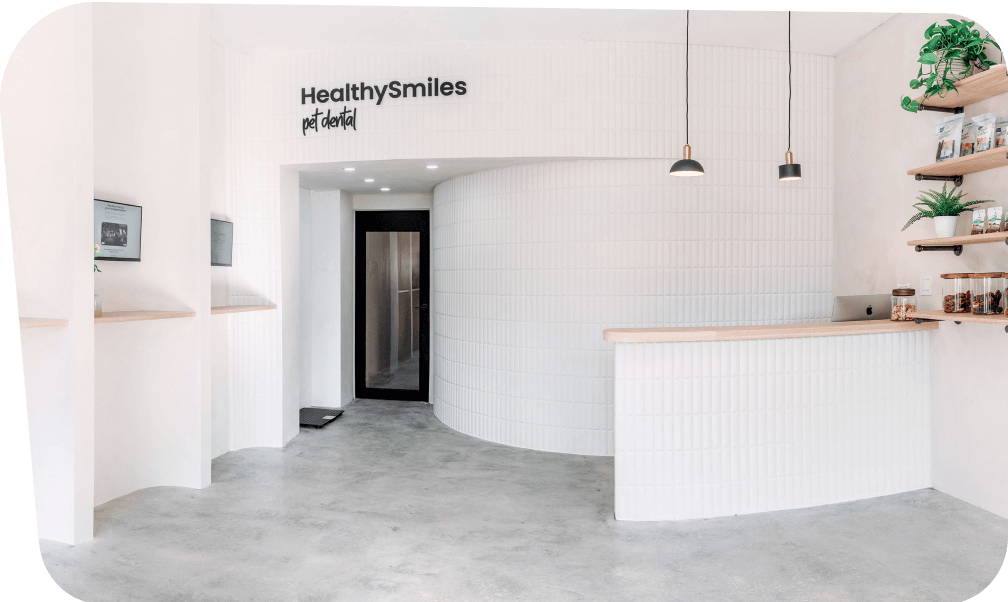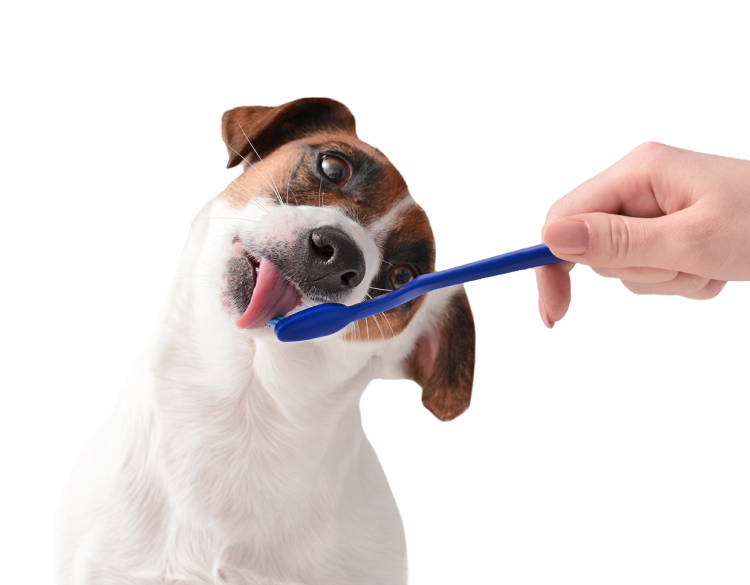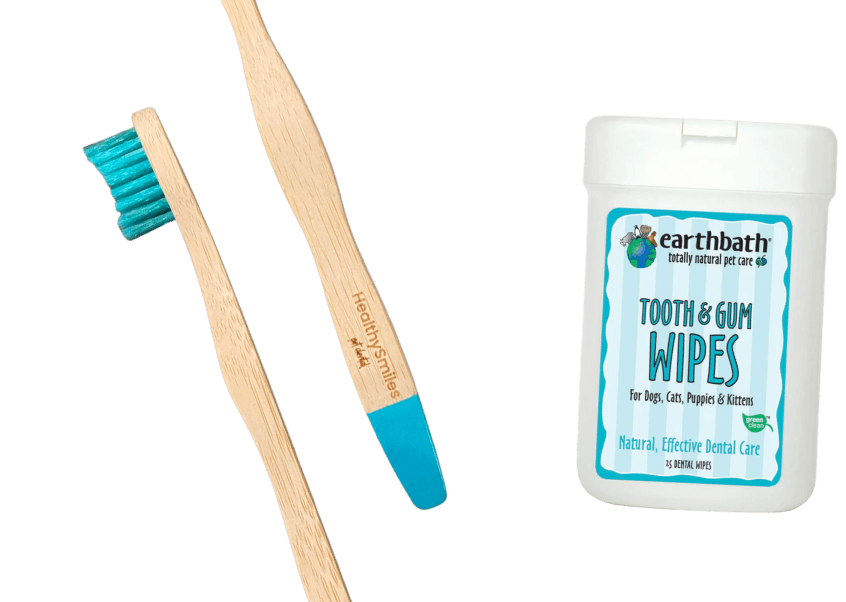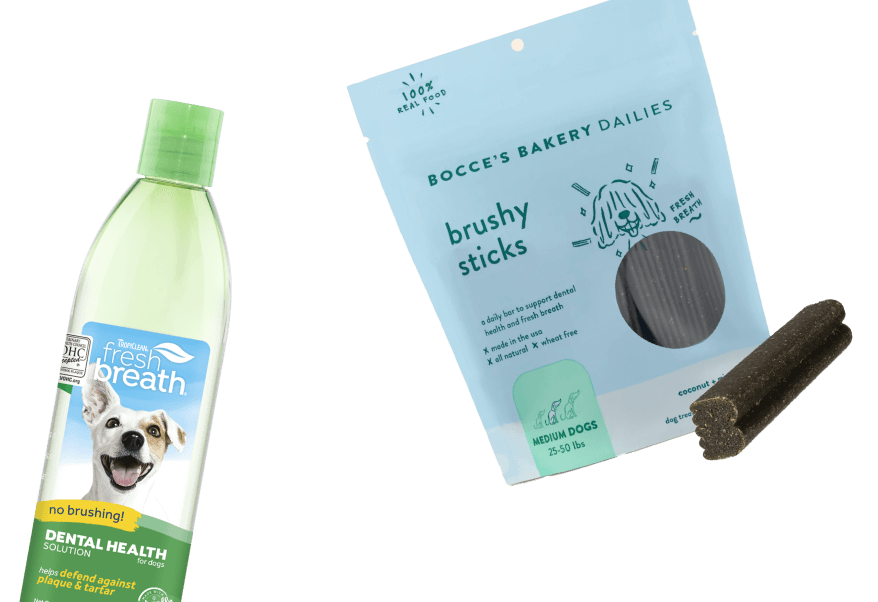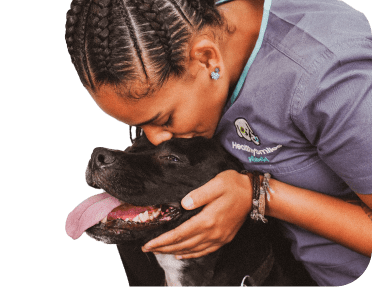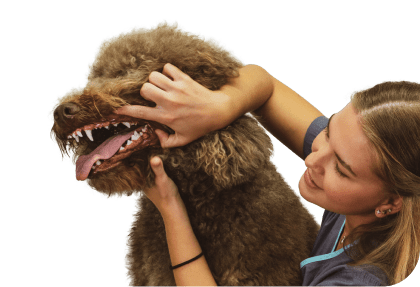Risks of Non-Anesthetic Pet Dental Cleaning
December 4, 2020It’s always safety first with HealthySmiles dental cleanings, and there are some risks pet owners should be aware of when they’re booking an appointment.
Our vet dental experts attend to pets of all ages. It is very important for us to learn about your pet’s medical history before every dental cleaning. We often find senior dogs that have arthritis and sometimes heart or kidney disease who need special treatment.
Educating pet parents is our number one priority. We want pet parents to be aware of the risks of non-anesthetic dental cleanings.
With this in mind, senior animals, short-muzzled breeds, cats, and smaller dogs (toy breeds) with a medical condition may be considered a higher health and behavioral risk during a non-anesthetic dental procedure. Our job is to keep pets safe and be transparent with pet parents, so they understand what these potential risks are (we list all the risks below), and our staff may decline some pets if it’s in the pet’s best interest not to have the procedure done.
Is your dog or cat a good candidate?
Our dental experts will always talk through any potential risks with pet owners when dental cleanings are booked as safety is our number one priority”
Sometimes after discussing the risks with the pet owner, it’s decided that the pet isn’t a good candidate for a non-anesthetic dental cleaning. In this situation, when health risks are part of the animal’s medical history, our experts will have to decline a dog or cat from a cleaning and refer them to their veterinarian.
It’s important that pet owners communicate these issues beforehand as the physical position the pet is in during a dental cleaning can make certain health issues worse. It is also especially important to communicate any previous neck, back, or orthopedic injuries.
If you’re interested in booking a dental cleaning, we invite you to review our medical record form, which all clients complete beforehand. This form includes questions that pet owners need to share with our dental experts’ team before scheduling the initial consultation.
Senior pets

Not all pets need general anesthesia for dental cleanings and polishing. Anesthesia free cleanings can be safer for senior pets. These are short procedures for your senior pet, and there is no recovery time required. However, suppose your senior pet has a health condition like heart disease, joint issues, or arthritis. In that case, a non-anesthetic dental may be too risky as the physical position the pet is in could worsen their condition.
As long as your dog is healthy, they are never too old to get a teeth cleaning. However, we always assess the procedure to ensure that your pet is a good candidate for a non-anesthetic dental cleaning.
6 Risks Associated with Non-Anesthetic Pet Dental Cleanings
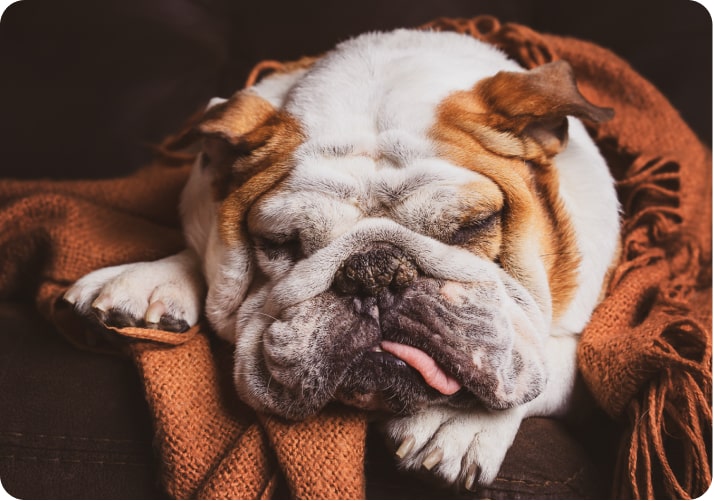
Brachycephalic breeds:
Breeds, including Bulldogs, Pugs, Pekingese, and Boxers, have the potential to be prone to eye irritation after the procedure due to their short-muzzled (flattened face). The position used for non-anesthetic dental cleanings may make a breed already predisposed to breathing issues worse. We take the time with these breeds and give them breaks during the procedure, which is very important.
Making a respiratory issue worse:
Dogs that suffer from collapsing trachea or congestive heart failure need to be done in intervals. As mentioned above, the position used for non-anesthetic dental cleanings may make respiratory issues worse. We give these dogs with respiratory issues breaks every 10 to 15-minutes during the dental. The dog can walk around and relax for five minutes, and then we continue the dental cleaning giving similar breaks, so we never exhaust the pet, and it remains a positive experience.
Post-dental oral infections:
Dogs categorized as having advanced periodontitis (level 4), inflammation of the gingiva (gums), and the surrounding tissues that result in severe bone loss are considerations of why a pet would be declined.
Neck pain or back issues:
The position the pet is lying in may cause some discomfort if they have a back, neck, or orthopedic condition. Your dog or cat will be in the same position for an extended period (45-minutes is a typical timeframe for a non-anesthetic dental cleaning).
Many health issues can cause chronic and acute neck and back pain in animals. Many diseases, including cancer, spinal trauma, referred kidney pain, and soft tissue injuries, can cause neck and back issues. Dogs and cats with these conditions are not good candidates for non-anesthetic dental cleanings and will most likely be declined for their safety.
The side effects of some of the above health issues may include an arched back, stiffness, recent soft tissue injuries, or spinal discomfort, and the position the animal is in can worsen these symptoms.
When we talk to pet owners about an injury of this nature that still wants to explore a non-anesthetic dental cleaning, we always advise they wait until this injury is fully healed. This is usually about three to four months after the onset of the injury.
Making an orthopedic injury worse:
We will need to adapt to a particular issue, including any old injuries. Similar to the above scenario, we advise that the pet owner waits until their animal’s injury is fully healed.
Side Effects of Non-Anesthetic Dental Cleanings

In addition to prioritizing pet safety, our vet dental experts also talk in detail with clients about the side effects of non-anesthetic dental cleanings.
- Pet is more tired than normal, which will make them sleep more than usual for the first 12 hours after the procedure.
- Increased thirst.
- Some dogs might experience vomiting after the dental cleaning due to the prophy paste taste and consistency. This would be resolved within two hours after dental.
- Some dogs might experience mild oral pain, which will go away within 1-2 days.
- Our dental experts recommend no food or water for 30-minutes following a non-anesthetic dental cleaning. And some pets may not want to eat after the dental cleaning is completed. They should resume eating habits within 24-hours after the dental.
- Some pets may experience temporary redness to their gums. This should go away within three days. The irritation most likely causes this redness from the plaque and calculus that was removed.
Non-Anesthetic Dental Cleaning from HealthySmiles Pet Dental Spa
As long as your dog is healthy, they are good candidates to get non-anesthetic teeth cleanings. Our dental experts will assess the procedure to ensure that your pet is a good candidate for a non-anesthetic dental cleaning. If we decline your pet for a non-anesthetic dental cleaning, we recommend discussing any issues we talked about with your veterinarian and why a dental anesthetic cleanings may be appropriate.






